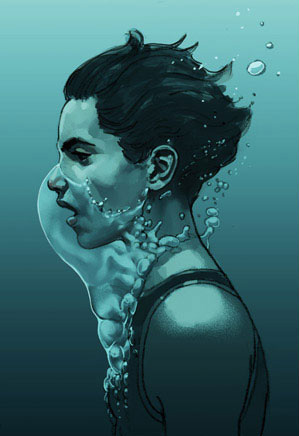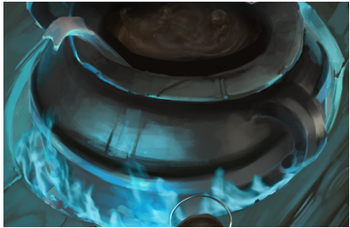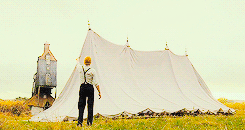Announcements
Welcome to Charms 501!
Please read the following FAQs before joining the class:
When will my assignment be graded?
Charms receives a high volume of assignments submitted each day, and our team is composed entirely of volunteers with real-world obligations. We will not prioritize your assignment over anyone elses. I ask that you be understanding and patient.
If you look in your gradebook, you will be able to see where your assignment is in the grading queue. If you notice that your assignment has not moved at all in the queue after a week, then you may message Professor Laurel to look into the issue.
What do I do if I have a question about an assignment?
Please feel free to reach out to any of our PAs with your questions! Just remember: 1. PAs will never give you the answer to a question. They are here to assist you in completing your work; not to do your work for you. 2. If you have any questions or need help, it is always best to ask before you submit your assignment! Keep in mind: Blank answers are an automatic zero; it is better to always try your best!
If you have a question about an assignment that has already been submitted, please send a private owl directly to Professor Laurel along with your Grade ID for the assignment (this can be found in your gradebook).
If you have any other questions or comments, please do not hesitate to reach out to Professor Laurel!
Lesson 8) Keep It Simple
Hello my dears and welcome back to Charms class! Today we will be moving on to one of the most important parts of advancing your casting: simplifying the wand movement. This is the first step on the long journey to casting magic without your wand so I urge all of you to pay close attention. Many of these concepts may seem familiar to those of you also taking Defense Against the Dark Arts, as Professor Penrose covered some of them earlier this year. I can see you are all very excited to get started today so I will jump right into it!
Casting Without Wand Movement
Think back to Year One of Charms, the third lesson to be precise. In that lesson, we first learned about wand movement as a spellcasting component. For those of you that may have forgotten some of the theory over the years, we will review that lesson briefly here. The vast majority of spells with very few exceptions will require some kind of wand movement. These wand movements serve many purposes, but are very helpful for focusing the effect of the spell on a target, or shaping said effect through the shape of the wand movement. Wand movements can vary greatly, from a simple point to much more complicated movements. Many of you may also remember from that same lesson our discussion of magical limitations and how crucial it is to include every spellcasting component in every casting.
But wait Professor, aren’t we learning how to cast without wand movement today? Doesn’t that go against everything you just said?
Why yes dear student! We are casting without wand movement today. However, this does not mean we will not still be shaping and directing our magic, we simply will not be doing it physically with our wands. Instead, we will be doing it mentally with an intense amount of concentration. The key to performing magic with limited or no wand movement is your concentration.
Recall again Year One of Charms, Lesson Five. In that lesson we first dove into the theory of concentration. Concentration was defined as the act of centering your mind and the spell’s effects on a target in order to make the spell happen. Therefore, it seems appropriate that our concentration will compensate for the lack of physical wand movement, does it not? Your concentration must increase one hundredfold if you are to cast magic without a wand though, as you not only need to account for the concentration component of the spell, but also for the wand movement.
This is where things get a bit trickier. At this point in your magical careers, you have four years worth of practice concentrating. I would also hope that you have four years worth of some sort of meditative exercise that helps you to focus your mind. If not, I encourage you to start immediately, as casting a spell without a wand will be much more difficult for you. Professor Penrose mentions in his lessons that he does yoga every day; I personally meditate each evening before turning in. Try to work some sort of relaxing, centering exercise into your daily activities or your magic will surely suffer.
We will start our practice of casting without wand movement with a spell you are all very familiar with. It is one that we learned in our first year of class together and one that I am sure you have all had plenty of practice with - the Levitation Charm. The spell block is below for your convenience:
Incantation: Wingardium Leviosa (win-GAR-dee-um levi-O-sa)
Wand Movement: Swish and flick.
Willpower: Low; Visualize your energy coming from your body and lifting the object.
Concentration: Moderate; On the thing you want to levitate.
Everyone please turn your attention to the feathers on your desks. Today we will be levitating these feathers with no wand movement. You will be sorely tempted to swish and flick out of habit, so it can be very helpful to keep your elbow on the table to ground yourself. Now everyone please point your wands at your feathers. With appropriate willpower and concentration, try casting the spell with no wand movement.
As you can see, not a single twitch from our feathers. Now try the same, but double - no, triple - your concentration. Imagine not only the feather levitating but picture the wand movement in your mind. Shape the magic with your thoughts and push it out of your wand and into the feather, levitating it from the desk. Ready? Begin.
Ah! I see a few of you had a feather hover just a bit? Very well done. Now do not be discouraged if your feather did not move at all. This is very advanced spellcasting and this was only your first try. I do not expect any of you to master this technique for quite awhile, but I encourage all of you to practice a few times a day until you are getting a better handle on things. Just remember, the key to casting without a wand is concentration!
Further Casting
While I am sure you would all love to sit and concentrate hard on your feathers today, we do have a few other spells I would like to introduce you to. These spells are being introduced today simply to broaden your magical repertoire as well as give you a wider variety of magic with which to practice simplified wand movement casting. These are also very useful charms that are never a bad idea to have in your bag of tricks. They are also fairly safe spells to practice your simplified wand movement casting on as well, so I encourage many of you to give these a try with the new concepts you have learned today.
The first spell we are covering is very useful if you are swimming, either for recreation or survival. It is appropriately called the Bubble-Head Charm! This charm can be used both underwater or on land. Underwater, it will supply you with oxygen, allowing you to breathe. On land, this spell is useful to survive in toxic or difficult environments, such as when escaping from a burning home or when exploring volcanic fields. It is not recommended this spell be used for more than thirty minutes though, as it can start to get difficult to breathe with time. Simply removing and reapplying the charm will correct this issue though. This charm acts by creating a bubble around your nose and mouth, allowing you to survive in the aforementioned environments.

Incantation: Bulla Respirare (BOO-la res-PEE-rah-ray)
Wand Movement: Two circles around the nose and mouth, one with each word of the incantation.
Willpower: Low; Keeps the bubble shaped like a bubble!
Concentration: Strong; Focus on creating the bubble and the feeling of breathing.
The next spell we are going to discuss is a favorite of Hogwarts Alumni Hermione Granger - Bluebell Flames! Bluebell Flames is a handy charm for creating fire. While you may be telling yourself you can just use the Fire-Making Charm, Bluebell Flames is actually much more useful. This charm allows you to create bright blue, waterproof flames that only provide heat to an object that they are directly underneath. They can also be touched, held, and placed in a container without damaging whatever is doing the touching. This makes them very useful for travel, potion-making, and for creating ambiance.

Incantation: Benthium (ben-THEE-um)
Wand Movement: A wave of the wand where you want the flames to land.
Willpower: Low.
Concentration: Moderate; Visualize the color and features of the flame (ie. waterproof, touchable, etc.).
The final charm we will cover today is the Erecting Charm. As the name states, this charm is used to erect something, meaning it will straighten and set up your target. This spell is most often used on structures like tents. It can be used on any structure given enough willpower, assuming the necessary materials are present. A small set of blocks will take less willpower to erect than, say, a house! The general rule of thumb is that you should have as many people casting the spell as you would if you were building the structure by hand, and that you can only erect man-made structures. So, for example, you cannot erect a mountain or a tree with this spell. To begin with, I recommend practicing on a set of blocks or sticks to create small houses.

Incantation: Erecto (uh-REK-toh)
Wand Movement: A point at the target
Willpower: Low to high; Depends on the size and materials you are trying to erect.
Concentration: Moderate; Visualize the structure completely put together and built.
That is all I have for you today my dears! Thank you for your rapt attention and I hope you all enjoy practicing your simplified wand movements! This will be the springboard we use to learn about wandless casting in the future, so make sure to practice diligently. Make sure to complete the essay and worksheet you have today, and I look forward to seeing you all next week.
Image credit: HP Wiki
- CHRM-401
Enroll
-
Simple Wand Movement Practice
Essay -
Lesson Eight Worksheet
Assignment
-
Martha Desurra
Professor's Assistant


